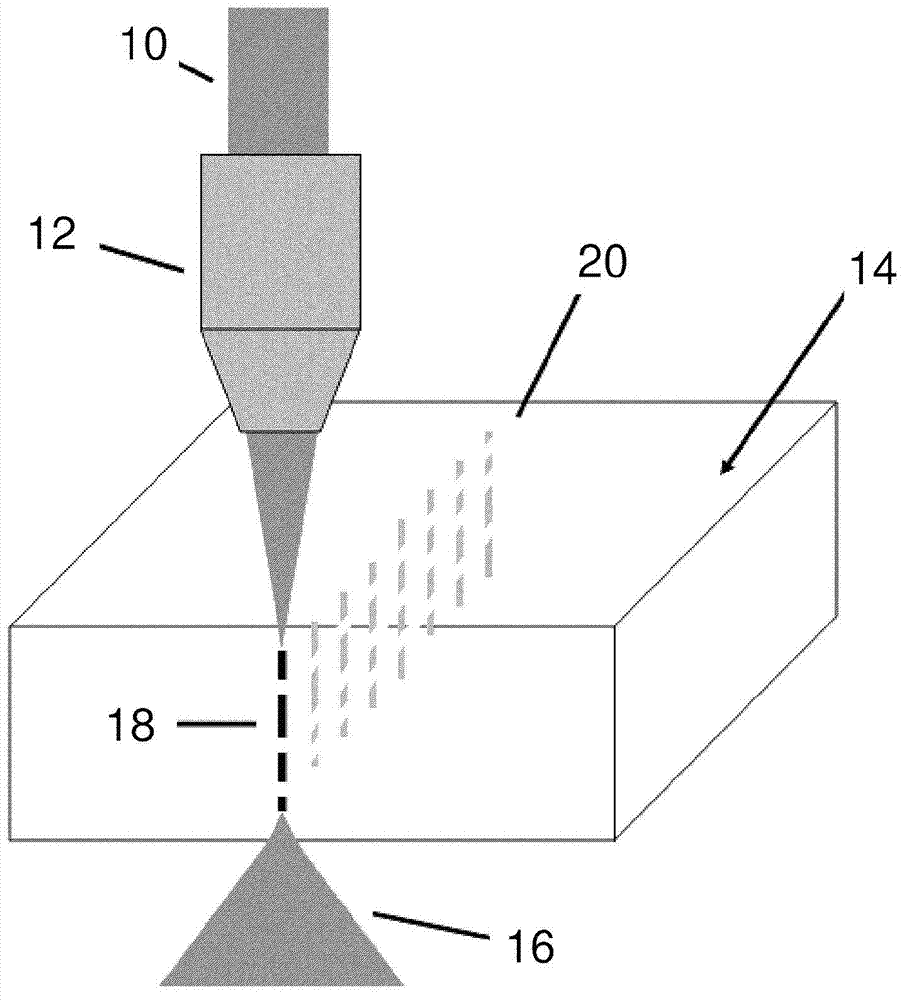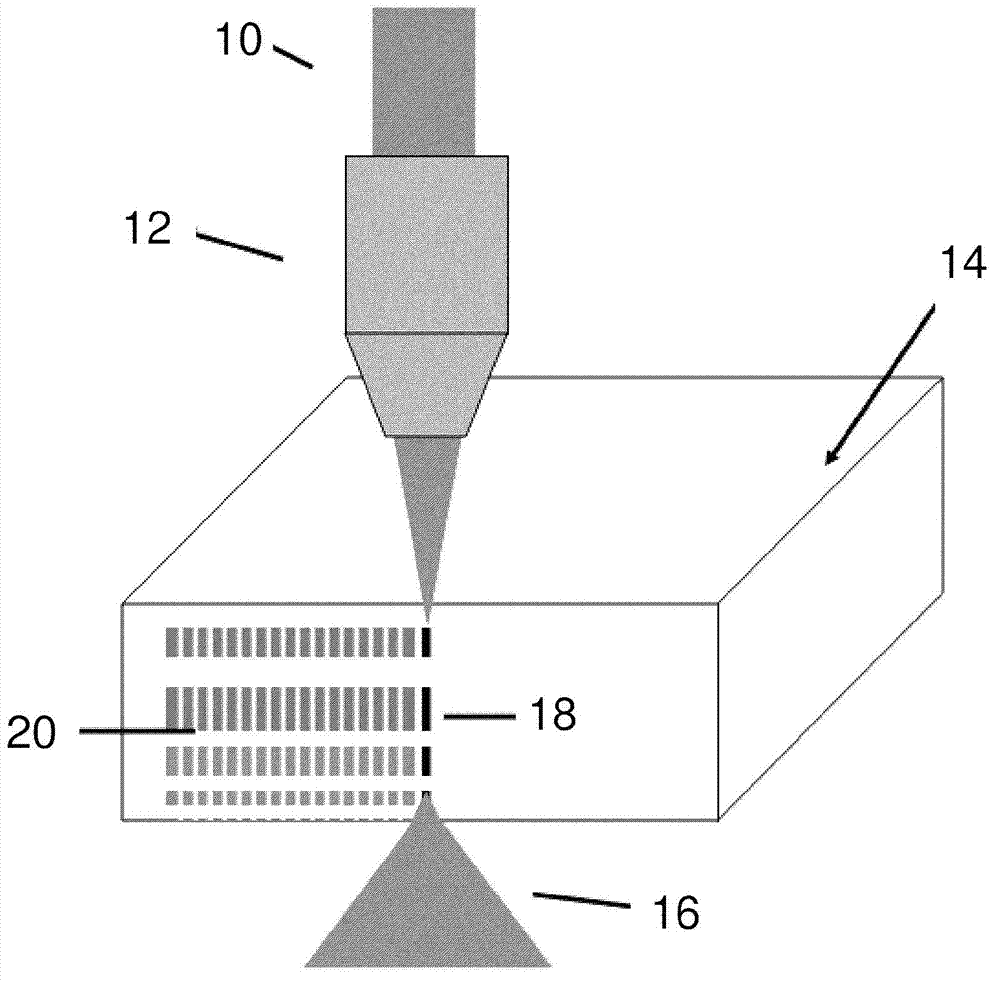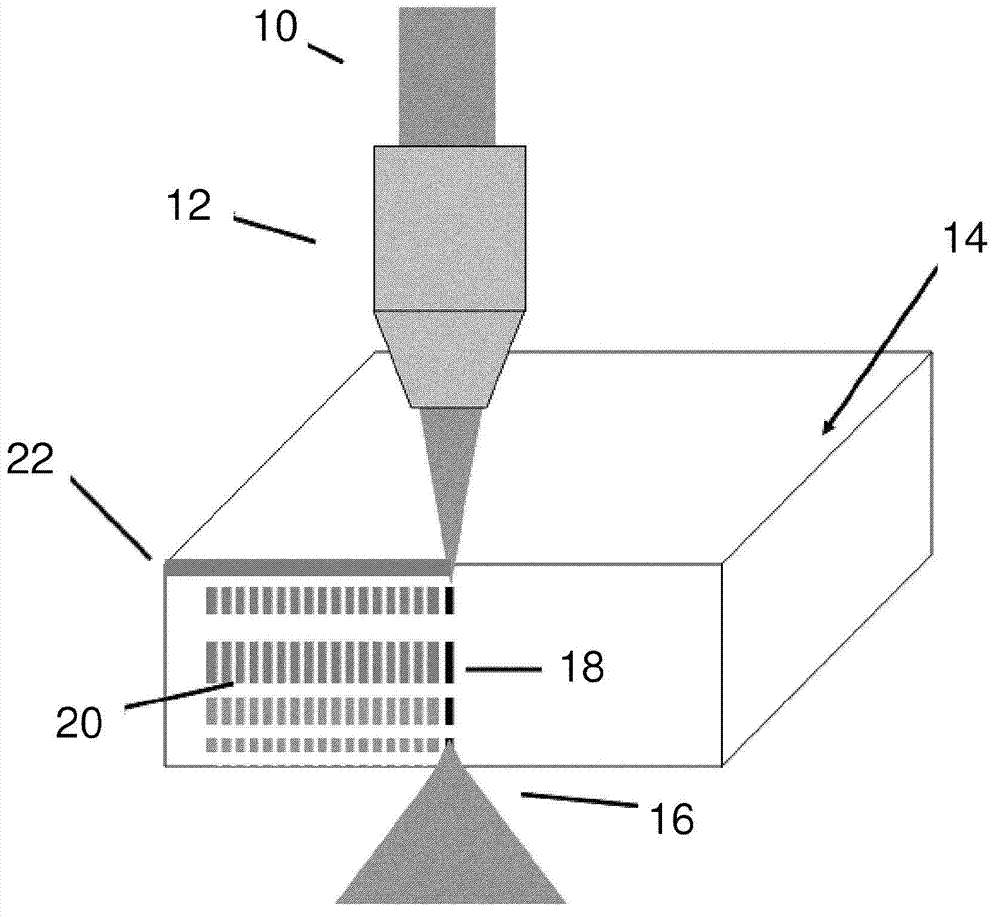Method of material processing by laser filamentation
A technology of laser beams and beams, applied in laser welding equipment, manufacturing tools, glass manufacturing equipment, etc., can solve the problems of not being environmentally friendly, large quantities, and increasing costs
- Summary
- Abstract
- Description
- Claims
- Application Information
AI Technical Summary
Problems solved by technology
Method used
Image
Examples
Embodiment
[0076] To illustrate selected embodiments, a glass plate was laser processed using a pulsed laser system producing 100 fs pulses at a repetition rate of 38 MHz with an effective wavelength of approximately 800 nanometers. The selected laser wavelength is in the infrared spectral range where the glass plate is transparent. The selected focusing optics provide a beam focus of approximately 10 μm. Initially, the laser system was configured to use a pulse train of 8 pulses, where the bursts forming the pulse train occurred at a repetition rate of 500 Hz. As described further below, various configurations of the above-described embodiments are used.
[0077] Figure 12 (a)–(c) Microscope images showing the side view of a 1 mm thick glass plate viewed through polished edge facets immediately after laser exposure. In order to observe the internal filament structure, the plates were not separated along the filament tracks for this case. A single burst of 8 pulses was applied at a ...
PUM
 Login to View More
Login to View More Abstract
Description
Claims
Application Information
 Login to View More
Login to View More - R&D
- Intellectual Property
- Life Sciences
- Materials
- Tech Scout
- Unparalleled Data Quality
- Higher Quality Content
- 60% Fewer Hallucinations
Browse by: Latest US Patents, China's latest patents, Technical Efficacy Thesaurus, Application Domain, Technology Topic, Popular Technical Reports.
© 2025 PatSnap. All rights reserved.Legal|Privacy policy|Modern Slavery Act Transparency Statement|Sitemap|About US| Contact US: help@patsnap.com



